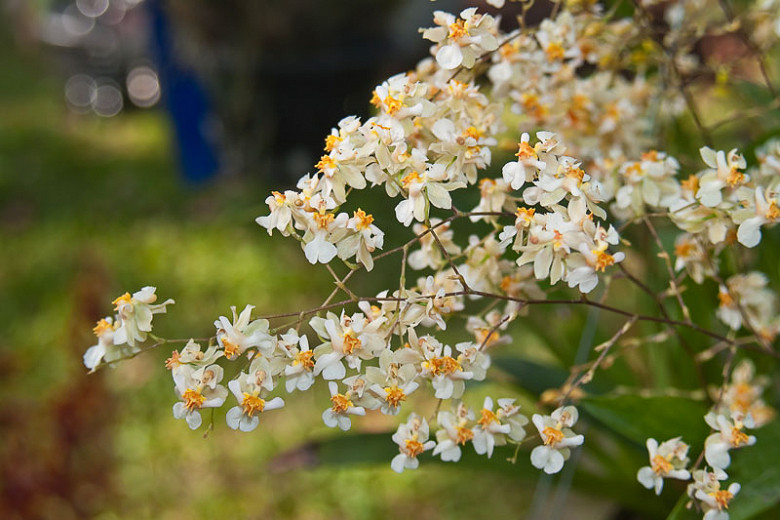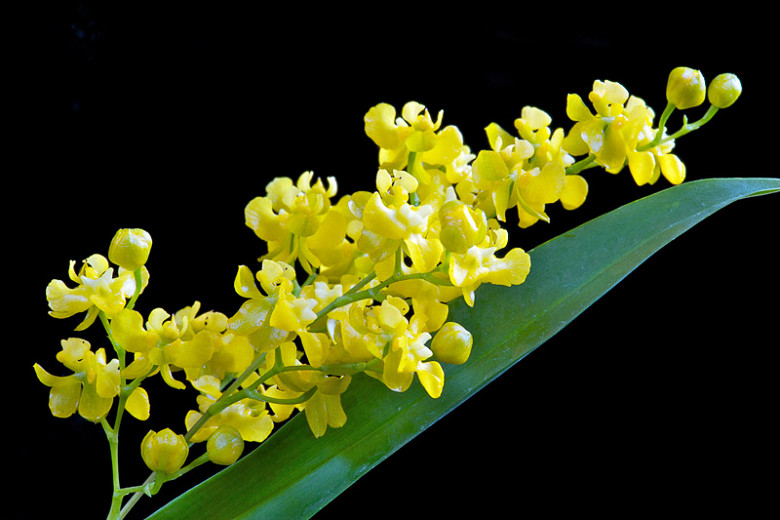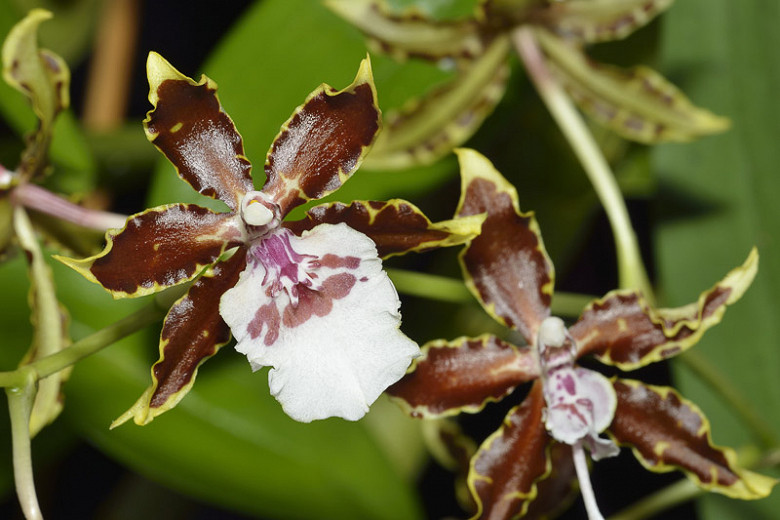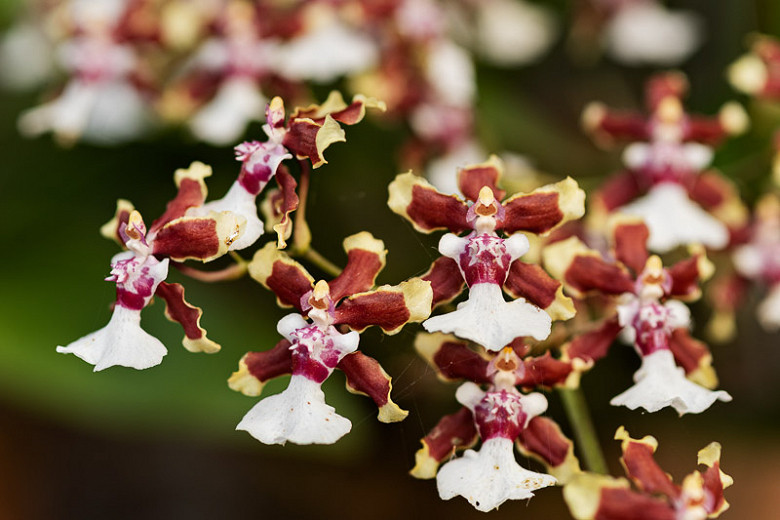Oncidium Twinkle gx (Dancing Lady Orchid)
Noted for its profuse flowering, Oncidium Twinkle gx (Dancing Lady Orchid) is a wonderful orchid with branching sprays laden with abundant, creamy-white flowers, each with a small, orange-yellow eye. Sweetly fragrant, the miniature blossoms emit the scent of vanilla when blooming. They appear in such great numbers that they create a charming cloud of butterfly orchids above the foliage of fresh green, strap-shaped leaves. Blooming for about a month, this hybrid orchid can flower at any time of the year. Noted for its ease of cultivation, compact growth, profuse flowering, and disease resistance, Oncidium Twinkle is a cross between Oncidium cheirophorum and Oncidium ornithorhynchum. It can be grown easily in the home in pots but will benefit from a shady location outside in the summer. Great for beginners and orchid experts alike.
- Recipient of the prestigious Award of Garden Merit of the Royal Horticultural Society.
- Grows up to 10-12 in. tall (25 cm).
- Grow in a fine-grade, bark-based epiphytic orchid compost. Provide bright filtered light and good ventilation.
- Needs a minimum night temperature of 50-64°F (10-18°C) and a daytime temperature of 64-71°F (18-22°C).
- Maintain adequate humidity (40-70%) for most of the year by setting the plant on a tray of gravel, partially filled with water, so that the pot never sits in the water. The higher temperature, the higher the humidity should be.
- Water regularly throughout the growing season, but allow the compost to become a little dry between waterings. Reduce watering to once a month or less in winter.
- Do not overwater. Oncidiums are prone to rot.
- During the growing season, feed with a weak, diluted orchid fertilizer every second or third watering. Mist regularly for high humidity.
- Reduce watering in winter and allow 4 weeks of daytime temperature around 50°F (10°C) to encourage flowering.
- Propagate by division when plants are large enough to be divided into clumps of 2 – 3 pseudobulbs and overflowing the pot.
- Once the flowers have faded, remove the spent flower spikes.
- Oncidiums do not like root disturbance and should only be repotted when either the compost becomes broken down or the pot becomes too small for the new growth. They like to be slightly underpotted in a very free-draining bark-based potting media. The best time for repotting is the period when new sprouts reach a size of 2 in. (5 cm) and begin to grow their roots.
- Generally disease free. Keep an eye out for aphids, glasshouse red spider mites, and mealybugs.
Tip for reblooming
- If a plant is large and healthy but does not produce flowers in a reasonable time, then move your plant to a brighter location or a location that gets an hour or two of the early morning sun.
Requirements
| Hardiness | 9 – 12 |
|---|---|
| Plant Type | Orchids |
| Plant Family | Oncidium – Dancing Lady Orchids |
| Exposure | Partial Sun |
| Season of Interest | Spring (Early,Mid,Late)Summer (Early,Mid,Late)FallWinter |
| Height | 10" – 1' (25cm – 30cm) |
| Water Needs | Average |
| Maintenance | Average |
| Soil Drainage | Well-Drained |
| Characteristics | Fragrant, Plant of Merit, Showy, Evergreen |
| Garden Uses | Patio and Containers |







